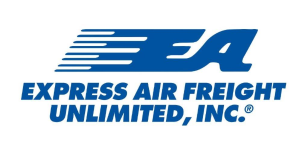Time:2015-09-08 Publisher:Atlas Ocean Breeze Shipping Company Num:653
The container-shipping industry has been highly unprofitable over the past five years. Making things worse, earnings have been exceptionally volatile. Several factors are responsible, notably trade’s spotty recovery from the global financial crisis, and redoubled efforts by corporate customers to control costs. Some of the pain is self-inflicted: as in past cycles, the industry extrapolated the good times and foresaw an unsustainable rise in demand. It is now building capacity that appears will be mostly unneeded.
These problems are real and significant, and largely beyond the power of any one company to address. But shipping companies cannot afford to throw up their hands and accept their fate. Hidden beneath these issues (and driving them to a degree) is another set of challenges that shipping lines can readily take on. Across the enterprise, in commercial, operations, and network and fleet activities, shipping lines have opportunities to improve performance. In sales, for example, carriers often confuse their costs with the value received by customers and fail to charge a premium for services for which shippers will pay more. In operations, many lines treat bunker as just another cost of doing business. In fact, fuel presents many opportunities, not just in procurement, but also in consumption. In network design, more than a few shipping companies use outmoded approaches to design their routes; new and more powerful systems use algorithms to make better, more effective decisions about networks.
With a little bit here and a little bit there, companies that take on a full program of initiatives can boost earnings by as much as 10 to 20 percentage points—enough to reverse the recent trend, and return to profit. To realize that kind of upside, however, firms must also ready their organizations for change. That’s a nontrivial challenge: in many ways, very little has changed in container shipping since the first crane hoisted the first box in 1956. Companies need to find ways to help employees embrace new ways of working and must be prepared to bet on the future. Carriers that embrace change will be better prepared than their rivals to make the best of the current business cycle and to thrive in the next one.
The industry’s bleak economics
Transport is often seen as the harbinger of the broader economy. It certainly fulfilled that role in the recent economic crisis, as business fell off precipitously. However, shipping is now also a kind of lagging indicator: its performance is trailing the broader, somewhat erratic global recovery.
A big part of the problem is that the industry continues to add capacity. By 2015, the typical vessel delivered will handle about 10,000 20-foot equivalent units (TEU), five times more than ships built in the 1990s. Not surprisingly, pressure to fill this capacity and capture the efficiency benefits of larger vessels has led to hasty decisions by carriers. In turn, profits have become exceptionally volatile. Record losses in 2009 were followed by strong profits in 2010―and significant losses again in 2011 (Exhibit 1).



